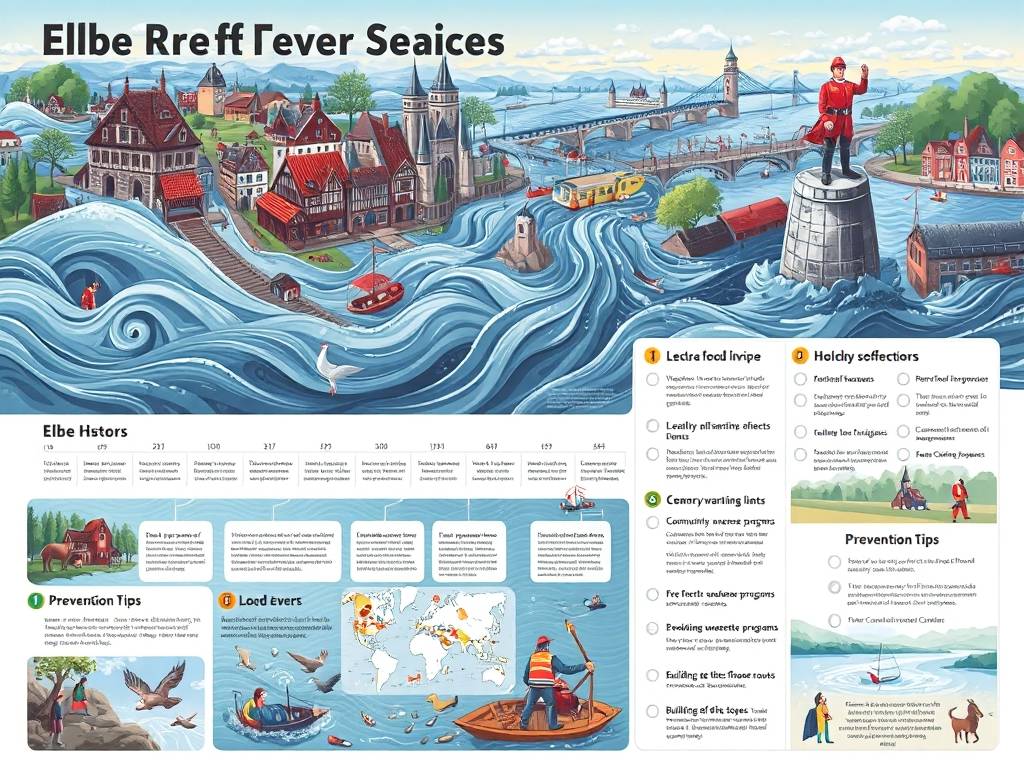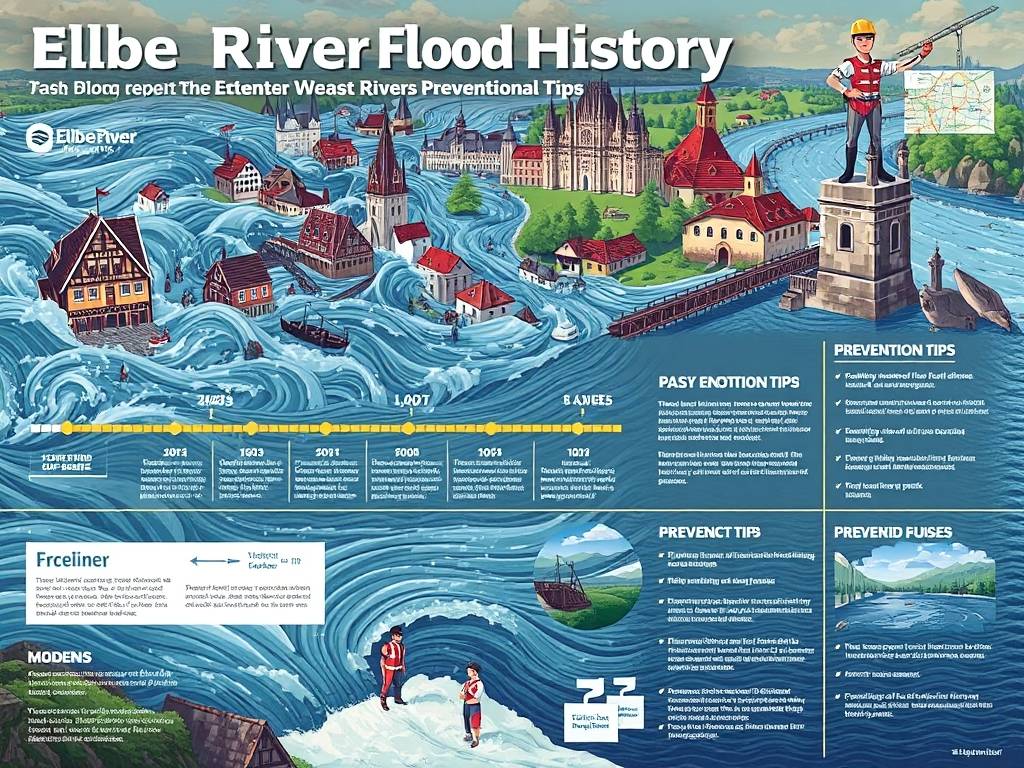Global Travel Information
Elbe River Flood History: Past Events & Prevention Tips
The Elbe River: A Legacy of Floods and Our Path to Resilience
The Elbe River, one of Central Europe's major waterways, has for centuries been a life-giver. It has nurtured civilizations, powered trade, and painted a serene blue ribbon through the heart of Germany and the Czech Republic. Yet, this same river holds a powerful, sometimes devastating, duality. Its history is punctuated by periods of overwhelming fury, where it bursts its banks, reclaiming the floodplains it once ceded to human settlement. Understanding the Elbe River flood history is not merely an academic exercise; it is a crucial journey into learning how to live in harmony with a powerful natural force. This article delves into the major Elbe River flooding events, explores the causes of Elbe River floods, and provides essential Elbe River flood prevention and safety tips to build a more resilient future.
A Chronicle of Water and Woe: Significant Floods on the Elbe

The memory of great floods is etched into the stone of old towns and the collective consciousness of the people living along the river. By examining these past events, we can identify patterns and better understand the river's behavior.
-
The Flood of 2002: A "Once-in-a-Century" Catastrophe Often called the "century flood," the 2002 European floods were a stark reminder of nature's power. Triggered by extreme, persistent rainfall from a cyclone-like system named "Ilse," the Vltava and other Elbe tributaries swelled to unprecedented levels. The water rushed into the Elbe, creating a massive wave that moved north. Cities like Dresden, Prague, and Magdeburg were submerged under meters of water. The Dresden Frauenkirche, a symbol of the city's rebirth, was once again under threat. The event caused billions of euros in damage and, tragically, led to the loss of lives. It was a pivotal moment that forced a fundamental re-evaluation of flood management strategies for the Elbe River.
-
The Flood of 2013: A Decade-Later Repeat Merely eleven years after the 2002 disaster, the Elbe basin was struck again. The 2013 Elbe River flood reached similar, and in some places even higher, levels than its predecessor. This event was particularly alarming because it challenged the statistical notion of a "once-in-a-century" event. It demonstrated that climate change was increasing the frequency and intensity of such extreme weather phenomena. While improved flood control infrastructure on the Elbe, such as mobile barriers, performed better than in 2002, the flood still caused widespread damage and disruption, proving that infrastructure alone is not a silver bullet.
-
Historical Precedents: The 1845 and 1890 Floods Looking further back, history records other monumental floods. The 1845 Elbe flood was one of the most severe of the 19th century, devastating vast areas and causing a major crisis for the agrarian societies of the time. Similarly, the 1890 flood caused significant damage in Prague. These historical events show that massive floods are an intrinsic part of the Elbe's natural cycle, long before modern climate change became a factor. They remind us that we are building our communities in a landscape shaped by water.
Why Does the Elbe River Flood? The Complex Interplay of Factors
The causes of Elbe River floods are multifaceted, involving a combination of meteorology, geography, and human activity.
- Meteorological Drivers: The primary trigger is often extreme and prolonged precipitation. This is typically caused by stationary weather systems, like the "Vb cyclone" trajectory, which draws moist air from the Mediterranean and deposits it as relentless rain over the Elbe's catchment area, particularly the Czech Republic and southeastern Germany. In winter, sudden snowmelt combined with rain can also lead to rapid rises in water levels.
- Geographical and Topographical Factors: The Elbe's basin is large and complex. When heavy rain falls simultaneously over several major tributaries like the Vltava, Mulde, and Saale, their waters converge in the main channel of the Elbe, creating a powerful and cumulative effect. Steep valleys in the upper sections can accelerate water flow, while the flatter northern German plains cause the river to slow down, spread out, and flood.
- Human Impact on the Landscape: For centuries, human intervention has exacerbated the flood risk in the Elbe River basin. River straightening, the construction of levees close to the channel, and the draining of wetlands for agriculture have all reduced the river's natural capacity to absorb excess water. Wetlands act as natural sponges, and floodplains are designed to be periodically inundated. By restricting these areas, we have effectively funneled water more quickly and with greater force downstream, increasing the impact of Elbe River floods on communities.
Building Resilience: Modern Prevention, Protection, and Safety
Learning from the Elbe River flood history, authorities and communities have developed a multi-pronged approach to Elbe River flood prevention. This strategy moves beyond simply building higher walls and embraces a philosophy of "living with the river."
A. Community and Government-Level Prevention Strategies
- Restoring Natural Floodplains: One of the most effective long-term strategies for Elbe River flood protection is to give the river more space. This involves strategically relocating levees further inland, reconnecting old oxbow lakes, and restoring wetlands. These areas can then safely absorb and store floodwaters, reducing the peak flow downstream.
- Improving Forecasting and Early Warning Systems: Advanced meteorological models and a dense network of water-level gauges allow for more accurate and timely Elbe River flood forecasts and warnings. This gives emergency services and residents critical lead time to enact protective measures.
- Smart Spatial Planning: Perhaps the most fundamental tip for reducing Elbe flood damage is to avoid building in high-risk zones. Strict building codes now prohibit or heavily restrict new construction in designated floodplains. Existing vulnerable buildings are being retrofitted or, in some cases, relocated.
- Diversified Defense Infrastructure: While not the sole solution, engineered structures remain vital. This includes a mix of permanent dams, mobile flood walls (as seen in Dresden), and controlled polders—designated areas that can be intentionally flooded to relieve pressure on more populated areas.
B. Essential Elbe River Flood Safety Tips for Residents and Travelers
Knowledge is your first and best defense. Whether you live near the river or are planning a visit, being prepared is key.
-
Before a Flood: Be Prepared
- Stay Informed: Know your risk. Check official flood hazard maps for your area. Bookmark the website of your local Elbe River flood warning center.
- Create a Plan: Have a family emergency plan that includes an evacuation route and a meeting point. Practice it.
- Prepare an Emergency Kit: Include non-perishable food, water, a first-aid kit, medications, a flashlight, batteries, important documents in a waterproof bag, and some cash.
- Protect Your Property: If you live in a flood-prone area, consider installing backflow valves in your sewer lines, sealing basement walls, and moving valuable items to upper floors.
-
During a Flood: Act Safely
- Heed Evacuation Orders: If told to evacuate, do so immediately. Do not wait.
- Avoid Floodwaters: Never walk, swim, or drive through floodwater. Just six inches of moving water can knock you off your feet, and two feet can sweep away a vehicle. The water may also be contaminated or hide dangers like open manholes.
- Stay Connected: Listen to local radio or TV stations for official updates and instructions.
-
After a Flood: Return with Caution
- Wait for the All-Clear: Only return home when authorities say it is safe to do so.
- Inspect Carefully: Be wary of structural damage, gas leaks, and electrical hazards. Do not use electrical appliances if they are wet.
- Document Damage: Take photographs for insurance purposes before you start cleaning up.
- Clean Thoroughly: Floodwater can contain sewage and harmful bacteria. Disinfect everything that got wet.
The story of the Elbe River is a powerful lesson in coexistence. Its flood history is a record of both tragedy and human ingenuity. By respecting the river's power, learning from the past, and implementing a balanced mix of natural restoration and intelligent engineering, we can mitigate the impact of future Elbe River floods. The goal is not to conquer the Elbe, but to build a resilient partnership with it, ensuring that its waters remain a source of life and beauty, not destruction, for generations to come.

相关文章
- Elbe River Literary Connections: Authors Inspired by the River
- Elbe River Artistic Heritage: Paintings & Sculptures of the Waterway
- Elbe River Eco-Tourism: Sustainable Travel Options
- Elbe River Family-Friendly Activities: Fun for Kids
- Elbe River Romantic Getaways: Perfect Dates by the Water
- Elbe River Solo Travel Guide: Tips for Lone Explorers
- Elbe River Food & Drink: Local Cuisine Along the Banks
- Elbe River Wine Regions: Vineyards Near the Waterway
- Elbe River Beer Gardens: Relax with a Pint by the River
- Elbe River Museum Guide: Learn About the River’s History
发表评论
评论列表
- 这篇文章还没有收到评论,赶紧来抢沙发吧~


